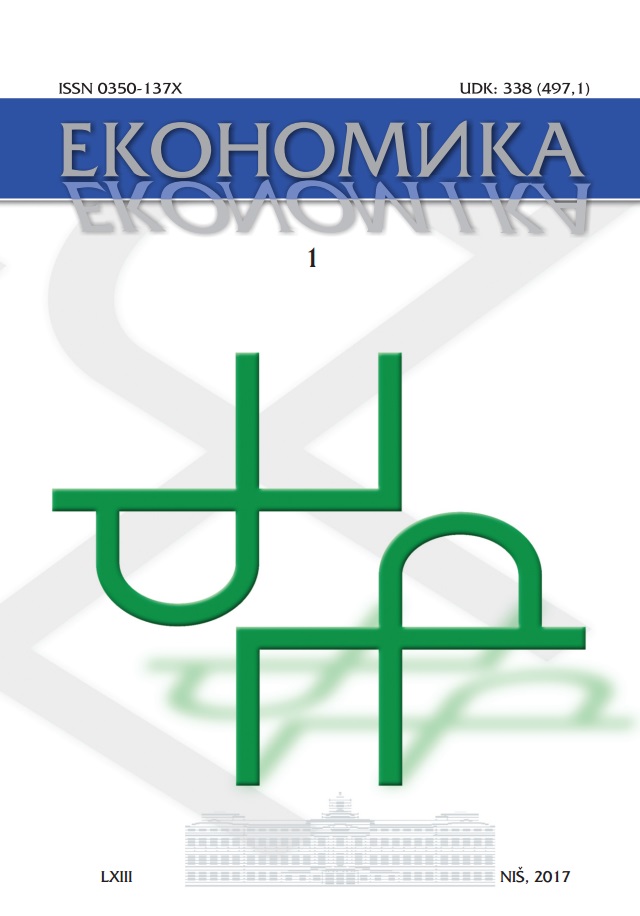EMPIRICAL ANALYSIS OF VALUE ADDED TAX AND INFLATION RATE: TUCKEY’S HSD TEST IN SELECTED WESTERN BALKAN COUNTRIES
EMPIRICAL ANALYSIS OF VALUE ADDED TAX AND INFLATION RATE: TUCKEY’S HSD TEST IN SELECTED WESTERN BALKAN COUNTRIES
Author(s): Branimir Kalaš, Vera Mirović, Jelena AndrašićSubject(s): National Economy, Public Finances, Socio-Economic Research
Published by: Društvo ekonomista "Ekonomika" Niš
Keywords: inflation;value added tax;anova;tuckey’s hsd test;western balkan;
Summary/Abstract: In economic theory the price movement at a general level is one of the essential issues that can significantly affect on economic flows. The aim of this paper is to show that there is a significant difference in the average price level in the countries of the region, where the value added tax rates are analysed at the same time. The subject of the paper is manifested by the reflection of the inflation rate and value added tax rate in seven countries in the region from 2008 to 2016. Selected countries are Serbia, Albania, Bosnia and Herzegovina, Croatia, Macedonia, Montenegro and Slovenia. Based on the graph, it was found that in the years when there was a growth of value added tax, the inflation rate was declined which means there is no positive impact of tax form on inflation ie. there is a reduction of the inflation rate. Also, bearing in mind fact that inflation rate is not primarily caused by the movement of value added tax rate, authors have focused on determining the difference between average inflation rate in observed countries. Using ANOVA and Tuckey’s HSD test, it is determined a statistically significant difference between all countries in the group, while in the case of Serbia, it can notice there is a statistically significant difference between other countries in the region, except for Montenegro, where there is no statistical significance.
Journal: Економика - Часопис за економску теорију и праксу и друштвена питања
- Issue Year: 2018
- Issue No: 2
- Page Range: 99-109
- Page Count: 10
- Language: English

